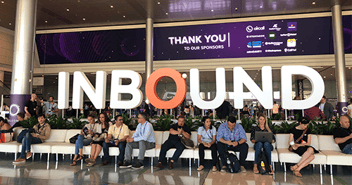Inbound Marketing and Its Relationship with Linking
Inbound marketing is often presented as a complete and well-oiled machine. While this is beneficial when looking at how an online campaign should operate; it is also helpful to examine individual cogs and workings to see how one part of this process benefits the whole. Inbound linking is a part of the inbound marketing whole. The unique thing about this piece is that people tend to interpret linking in many different ways. Multiple interpretations of this relationship building tool create distractions and misconceptions.
These interpretations lead some web developers to believe that negative advertising and link farming tactics are still the best way to attract web traffic, get found and recognized by search engines, and rise in the ranks of relevant searches input across the Internet. Unfortunately, nothing could be further from the truth.
To get a clear and defined idea of where we were, where we are, and where we will be; we have to look at how inbound marketing expectations and best practices have changed. This investigation of expectation will start with inbound linking.
The Law of Attraction
Whatever you do in inbound marketing, remember the law of attraction. Your first goal in constructing any portion of your marketing plan is to attract users, readers, and/or web traffic. Inbound linking plays a pivotal role in the law of attraction because it allows your reputation to proceed you.
Online linking no longer involves relying on lists of random links or spamming your users to get a response. Google algorithms have taken on the responsibility of policing content that is published on the Internet. Part of those regulatory efforts has been penalizing and demoting the websites that put outdated tactics into practice.
Before you follow in the wrong footsteps, it’ll be helpful to know what link building is meant to do instead of what it's been manipulated to do.
The Ultimate Voucher
Link building is an online buddy system. It is meant to vouch for the quality and validity of your site content using the most reputable references available:
1. Other websites
2. Search Engines
Think of it as a hyperlinked game of telephone. First, you research and write on a topic. Then you corroborate what you've written with supporting facts and information from other top-ranked sources in the industry. Not only does this help both of you gain traction and users online; the higher your secondary source is on the search results page the more trustworthy and informative the search engines believe the fight to be. Strategize and align yourself with high-quality content and pretty soon your content will be top-ranking too.
Google gets the message from your inbound linking partners that your site is home to quality, fresh information. The search engine will find, review and rank your site accordingly. This ranking passes that same high-quality content message to potential website visitors.
As more visitors click on your site first, they will become familiar with your product, service, or brand-name. Foster this relationship with your target audience, and you will have established brand loyalty, word-of-mouth marketing, and a proven track record with ROI.
Looking at it from this perspective; it's easy to see how something as simple as the sites you choose to associate with and credit on a regular basis can have a positive and lasting effect on your online presence. When you can trace your inbound processes from beginning to end, and see how each piece fits together with the one before it, you can make other plans to succeed in inbound marketing.
Questions and Final ThoughtsStart tracking your inbound linking and see what happens!






